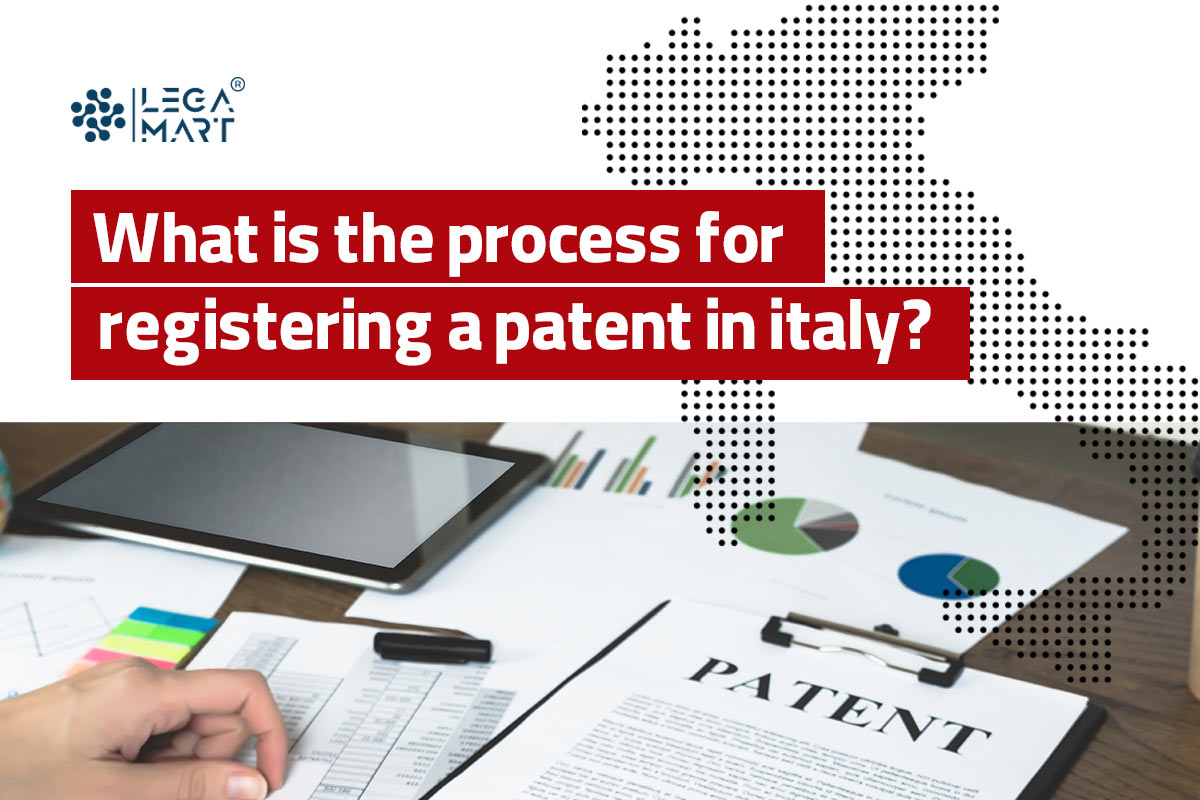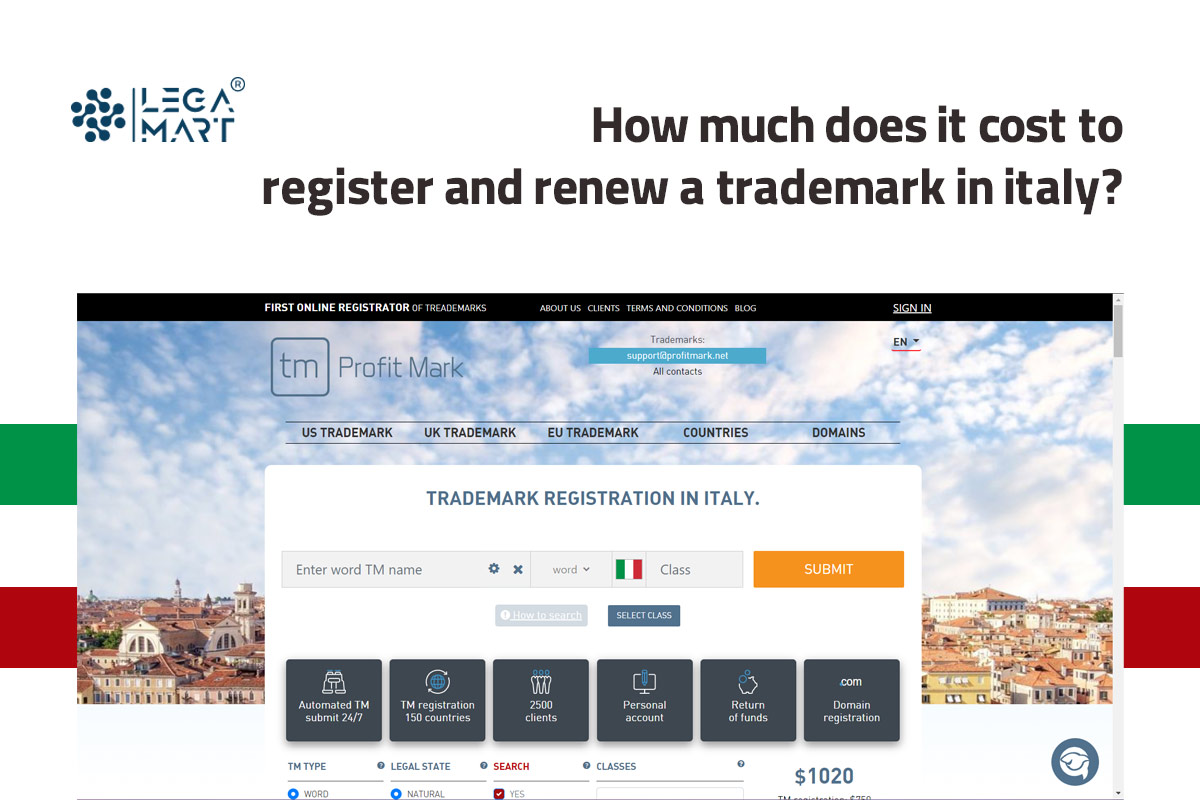- Introduction
- What are the main types of intellectual property rights in Italy?
- Copyright protection in Italy
- Patent protection in italy
- What is the process for registering a Patent in Italy?
- How much does it cost to file a patent for an invention and a utility model in Italy?
- Fee for Patents for utility models
- Trademark protection in Italy
- What is the process for registering a trademark in Italy?
- How much does it cost to register and renew a trademark in Italy?
- How can intellectual property be enforced in Italy?
- Conclusion
A young designer named Giulia spent months creating a new line of handbags in Italy. She poured her heart and soul into the project. She filed for intellectual property protection and was granted a patent for her unique design. However, her excitement was short-lived as she soon discovered that her design had been copied and was being sold by a competitor.
Having a good knowledge of Italy’s Intellectual Property laws, Giulia could take legal action and protect her intellectual property rights. The case went to court, and the judge ruled in her favour, awarding her damages and ordering the infringing company to cease all sales of the copied design. Thanks to Italy’s strong intellectual property laws, Giulia protected her hard work and creativity and continued to grow her business.
Introduction
Intellectual property in Italy can be classified into three categories; copyrights, patents, and trademarks. That said, Italy protects the three categories under different laws and for different periods. At the end of this article, you’ll understand how Italy can manage this.
Applications and filings of various IP rights in Italy are made with the Italian Patents and Trademarks Office, the main institution mandated for this role, and it provides all information needed for applications for patents, trademarks, and designs in Italy. Therefore, when it comes to protecting intellectual property in Italy, including digital content shared on social media platforms, creators have sufficient legal avenues at their disposal.
What are the main types of intellectual property rights in Italy?
Italy recognizes various forms of Intellectual Property Rights such as copyright, patent trademark, geographical indications, trade secrets, and plant variety rights. However, the main types include:
Copyright: Copyright protects original works of authorship, such as literary, artistic, and musical works. Copyright protection is automatic and begins from the moment the work is created. However, it is recommended to register the work with the Italian Copyright Office (SIAE) to prove ownership and facilitate legal actions.
Patents: Patents are granted by the Italian Patent and Trademark Office (UIBM) and provide exclusive rights to an invention for up to 20 years from the filing date. To be granted a patent, an invention must be new, inventive, and have industrial applicability.
Trademarks: Trademarks can be registered with the UIBM and provide exclusive rights to a particular name, logo, or design used in connection with goods or services. Trademarks are valid for 10 years and can be renewed indefinitely. To ensure comprehensive protection, individuals or businesses may consider the option to trademark a Logo in the UK. Additionally, trademarks in Italy can also be registered internationally via the Madrid Protocol, for example in the US, the applicant will need to navigate the US trademark system effectively. This involves compliance with the rules and regulations set forth by the United States Patent and Trademark Office (USPTO).
Industrial designs: Industrial designs can be registered with the UIBM and protect the ornamental or aesthetic aspects of a product or object. Industrial designs are valid for up to 25 years from the registration date.
Copyright protection in Italy
Italy is a member of the European Union (EU) and, as such, follows EU copyright laws. In addition to laws enacted by the EU, Italy also implements international copyright treaties and conventions, including the International Convention for the Protection of Performers, Producers, and Broadcasting Organizations of 1961; the Berne Convention of 1971; and the World Intellectual Property Office (WIPO) Copyright Treaty of 1996.
Therefore, Italy recognizes the minimum copyright protection standards stipulated in those international treaties. In addition to global conventions, Italy also uses its national copyright law.
Under the Italian Copyright Law (CL), you own the copyright to your work as soon as you create it. Article 25 of the CL specifies the types of works granted copyright protection in Italy. These include literature, songs or music-related content, drama works, databases, buildings and building plans.
You don’t have to undergo any special process to be entitled to copyright protection. However, you should register your work with the Italian Society of Authors and Publishers (SIAE). The main advantage of this registration is to acquire evidence of the creation of the work so that you can have a strong case against potential infringers in the future.
There is no formal consequence for skipping the registration, but your work will be more prone to infringement, especially if it is unpublished.
Patent protection in italy
Unlike copyright, patent protection is obtained through patent registration with the Italian Patent and Trademark Office (UIBM). In Italy, you can apply for a patent for a new invention, such as a standing fan, or a utility model, like a standing fan with a carbon dioxide-rechargeable system. While the former is an entirely novel idea, the latter is an improvement on that idea.
What is the difference between the two? An invention patent lasts twenty years, but a utility patent expires ten years from the filing date. Neither of them can be renewed. After their expires, they are released into the public domain and can be used, offered for sale, sold or imported without the owner’s permission.
What is the process for registering a Patent in Italy?
Patent applications are filed at the Provincial Offices of the Ministry of Industry or the Italian Patent and Trademark Office (IPTO). The following steps are involved in registering a patent in Italy:
Conduct a patentability and novelty search: Before filing a patent application, it is recommended to conduct a patentability and novelty search to determine if the invention meets the requirements for patentability; to ensure the invention you want to protect is new and inventive; and to ensure that the invention is not already patented.
File a patent application: The patent application must be filed with the Italian Patent and Trademark Office (IPTO) and include information such as the title of the invention, a description of the invention, and any drawings or diagrams that are necessary to explain the invention.
Examination: After the application is filed, the IPTO will examine it to determine if it meets the formal requirements for patentability. This includes assessing the novelty, non-obviousness, and industrial applicability of the invention. Applications filed as of 1 July 2008 will equally undergo a priority search by the European Patent Office on behalf of the IPTO.
Publication: The patent application will be published in the Italian Patent Gazette after its approval. This publication marks the beginning of a six-month opposition period, during which third parties can oppose the patent’s grant.
Grant of the patent: If no oppositions are filed or the oppositions are unsuccessful, the patent will be granted, and a certificate of the grant will be issued. The grant is approximately 3 years after the application filing date. The patent is then valid for 20 years from the date of filing.
How much does it cost to file a patent for an invention and a utility model in Italy?
The filing fees vary according to the type of patent, i.e. invention or utility model, and the mode in which the application is filed, i.e. online or on paper. Fees for Patents for the invention include:
- Filing online attracts a fee of EUR 50.00
- Filing hard copies, the filing fees vary depending on the number of pages in the application, i.e. between EUR 120.00 and EUR 600.00.
- Any claim beyond the tenth claim will attract an additional fee of EUR 45.00.
Fee for Patents for utility models
EUR 50.00 for filing online; and
EUR 120.00 for filing hard copies, this is regardless of the number of pages and claims.
Trademark protection in Italy
The UIBM is responsible for registering trademarks protectable under Italian law. For your trademark to be protected in Italy, it must be registered with the UIBM, the EU or WIPO.
What is the process for registering a trademark in Italy?

One can register a trademark in Italy either locally through the Ufficio Italiano Brevetti e Marchi (UIBM) or regionally through filing an application at the European Union Trademarks (EUTM), which grants protection in the whole of the European Union (EU). The entire registration process can take several months to a year or more, depending on the complexity of the trademark and any oppositions filed.
It is advisable to work with a qualified IPR lawyer to ensure the application is properly prepared and filed. Feel free to contact lawyers at Legamart to help in the registration process. The registration process entails the following steps; –
Conduct a trademark search: It is always recommended to search before filing a trademark application to ensure that the trademark is not already registered or used by someone else.
File a trademark application: trademark application is filed with the Italian Patent and Trademark Office (UIBM). The necessary information that should be included in the application includes; the trademark owner’s name and address, a description of the associated goods or services, and a representation of the trademark.
Examination: The UIBM will then examine the filed application to determine if it meets the requirements for registration. The examination process includes assessing the distinctiveness of the trademark and ensuring that it does not conflict with any existing trademarks or the trademark laws requirements.
Publication: If the trademark application is approved, it will be published in the Italian Trademark Gazette for opposition purposes. This allows third parties to oppose trademark registration if they believe it conflicts with their rights.
Registration: The trademark will then be registered, and a certificate of registration issued.
How much does it cost to register and renew a trademark in Italy?

The trademark application and renewal fees in Italy vary depending on the type of trademark and the number of classes of goods and services covered by the trademark. The basic fees for filing a trademark application in Italy are as follows:
Fees for goods and services in a Nice class for the initial filing of an application is EUR 101.00, while (EUR 67.00 for renewal applications); and
The fee for goods and services included in each class in addition to the first is EUR 34.00.
How can intellectual property be enforced in Italy?
When all has been said and done, IP rights are private rights. As a result, they cannot be enforced by the Italian government. It is your obligation as the right holder to enforce your right when necessary, or else infringers will use your intellectual property for economic gain.
The first way to enforce your IP is by using it. If you have written a book, sell some copies. Use your invention to make money. If your brand is trademarked, let the world know what you deliver.
In the case of IP infringement, Italy allows victims to seek interpersonal solutions such as arbitration. Arbitration is faster than litigation because it usually only takes one meeting between the infringer, victim, and arbitrator to resolve the infringement claims.
Arbitration is a private process, so details about the IP dispute and any damages awarded (if any) will be kept private. This is healthier for your business and personality if you would rather not put up with the bad press.
However, if you decide to go through with litigation to protect your intellectual property, the doors of the Italian courts are always open.
Conclusion
Intellectual property protection in Italy is governed by a comprehensive legal framework that covers a wide range of intellectual property rights. Besides, Italy is a member of several international treaties and organizations that promote and regulate intellectual property protection, including the World Intellectual Property Organization (WIPO), the European Patent Office (EPO), and the European Union Intellectual Property Office (EUIPO).
Generally, Italy has a robust legal framework and infrastructure for protecting intellectual property rights. However, the country still faces various challenges in addressing the growing issues of online piracy and infringement and ensuring effective enforcement of intellectual property rights across different sectors and industries.
You might want to read our article on how to trademark a logo in the USA?





